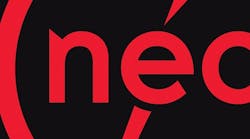With temporary installations, “temporary” is a time concept, not a quality concept. Temporary wiring must be removed immediately upon completion of the construction or purpose for which it was installed [Sec. 590.3(D)] and temporary wiring for holiday lights must be removed within 90 days of installation [Sec. 590.3(B)].
Even if temporary:
- Services must comply with the applicable Parts I through VIII of Art. 230 [Sec. 590.4(A)].
- Feeders still require Art. 240 overcurrent protection [Sec. 590.4(B)].
- Branch circuits must originate in an approved power outlet, switchgear, switchboard, or panelboard [Sec. 590.4(C)].
- Receptacles must be of the grounding type [Sec. 590.4(D)] and if on construction sites cannot be installed on any branch circuit that provides temporary lighting
Suitable disconnecting switches or plug connectors must be installed to permit disconnecting all ungrounded conductors of each temporary circuit [Sec. 590.4(F)].
Flexible cords are typically present on jobs that require temporary wiring. These must be protected from accidental damage [Sec. 590.4(H)]; using a combination of cord protectors, proper supports, and smart routing will achieve this.
Sponsored Recommendations
Sponsored Recommendations




